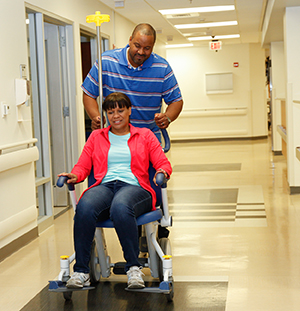A
B
C
D
E
F
G
H
I
J
K
L
M
N
O
P
Q
R
S
T
U
V
W
X
Y
Z
Topic IndexLibrary Index
Click a letter to see a list of conditions beginning with that letter.
Click 'Topic Index' to return to the index for the current topic.
Click 'Library Index' to return to the listing of all topics.
When to Use the Emergency Room (ER)

An emergency means you could die if you don’t get care quickly. Or you could be hurt permanently (disabled). Read below to know when to use and not use an emergency room (ER).
Dangers to your life
Here are examples of emergencies. This is not a complete list. These need care right away:
-
A hard time breathing (shortness of breath)
-
Severe chest pain or pressure
-
A fast or pounding heartbeat (palpitations) or fluttering in your heart
-
Choking
-
Severe bleeding
-
Suddenly unable to move or speak
-
Suddenly not being able to feel an arm or a leg
-
Blacking out (fainting)`
-
Poisoning
-
Coughing or vomiting blood
-
Severe or lasting vomiting or diarrhea
-
Severe belly (abdominal) pain
-
Changes in mental status or confusion, trouble waking up, abnormal behavior
-
Changes in vision
-
Sudden onset of the "worst headache of your life"
-
Suicidal thoughts
-
Thoughts of harming another person
Dangers of permanent injuries
Here are other emergencies. These also need care right away:
When it’s an emergency
If you have an emergency, follow the steps below.
1. Call 911
2. Call your primary care provider after the emergency care
-
Tell your healthcare provider about the emergency. Call within 24 hours of going to the ER.
-
Have someone call for you if you can't make the call yourself.
-
Go to your healthcare provider's office for any follow-up care. Do this , unless you are having symptoms that you have been told are an emergency and should be treated in the ER.
When it’s not an emergency
If a problem is not an emergency, follow these steps:
1. Call your primary care provider
-
Call your health insurance plan if you don’t know the name of your healthcare provider.
-
Have someone call for you if you can't call.
-
Visit an urgent care center or walk-in clinic if you don't have a primary care provider.
2. Follow instructions
-
Your healthcare provider will tell you what you should do.
-
You may be told to see your healthcare provider right away. You may be told to go to the ER. Or you may be told to go to an urgent care center.
-
Follow your healthcare provider’s advice.
Online Medical Reviewer:
Eric Perez MD
Online Medical Reviewer:
Ronald Karlin MD
Online Medical Reviewer:
Tara Novick BSN MSN
Date Last Reviewed:
12/1/2022
© 2000-2025 The StayWell Company, LLC. All rights reserved. This information is not intended as a substitute for professional medical care. Always follow your healthcare professional's instructions.